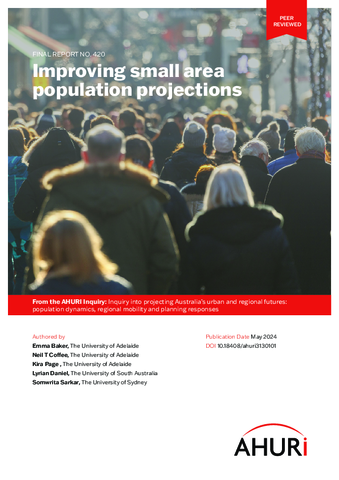Understanding the patterns and impacts of population migrations within Australia is key for governments and providers of housing, infrastructure and services to be able to plan where they will prioritise resources. New AHURI research critically assesses the population projection methods available to Australian decision-makers and planners.
Population projections are modelled either as top-down models, where larger spatial units are used to control the smaller area projections, or as bottom-up models, where the smaller area projections are added together to form the population projection of the larger spatial units.
For example, with a top-down projection Australia’s total population can be used as a control total for the state and territory projections and, in turn, these are used to control the smaller regional populations projections. In the bottom-up model, the projected populations of the states and territories would be added together to form the total population projection of Australia.
A significant finding is that because different users need different levels of understanding about future population changes, it is unlikely the existing methods could be unified into one nationally consistent approach that would be accurate enough for everyone’s needs. However, results can be improved by users prioritising good quality, reliable and timely data; ensuring consistent approaches and shared information sources; and making sure they have a good understanding of each method’s strengths and weaknesses.

